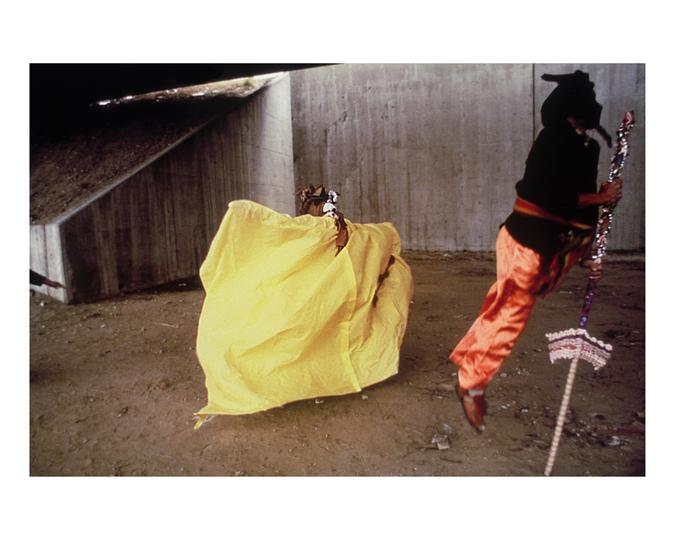Senga NengudiExhibitions
Senga Nengudi
Dominique Lévy is pleased to present its first exhibition with the artist Senga Nengudi. Organized by Begum Yasar, this selection of recent sculptures and 1970s performance stills inaugurates “The Back Room,” the gallery’s new 3rd floor project space.
In the 1970s, Nengudi worked in Los Angeles as part of an emerging community of African American artists that engaged with multiple radical political movements underway in the United States and around the globe, including the Black Power movement and the feminist movement. Using quotidian materials to create installations, sculptures, performances, and videos, these artists were key participants in the emergence of identity politics within the visual arts. During this time, Nengudi—who was formerly a dancer—began to develop a style of performance in which the human body entered into a relationship with sculptural constellations of worn nylon mesh pantyhose, sand, and other malleable, ordinary, or discarded materials. Such sculptures link the wall—the “proper” space of art—to the floor, the realm of movement, horizontality, gravity, and physical connection to the human body. Integrating the California assemblage aesthetic with contemporaneous forms of modern dance, Nengudi worked in collaboration with such peers as Maren Hassinger, Ulysses Jenkins, Noah Purifoy, Franklin Parker, Houston Conwill, David Hammons, Betye Saar, and Barbara McCullough, to activate and perform with her sculptures. These soft sculptures would be distended into various shapes and configurations in response to the choreographed actions of the performer. These early projects led to a long-standing collaboration with Maren Hassinger, who often dances with Nengudi’s sculptures.
Senga Nengudi at Dominique Lévy features recent nylon mesh pantyhose and sand sculptures that respond directly to her performative, biomorphic, and political series Répondez s'il vous plaît (RSVP) (1975-77). Engaging in a dialogue with both post-minimalism and second-wave feminism, the stretched, twisted, and knotted fabric of the RSVP works and more recent Reverie sculptures recall contorted flesh. Nengudi’s corporeal sculptures, which often suggest genitalia and breasts, take on feminist associations as “part-objects” in the absence of adjoining bodies. In this way, the sculptural works on view invite meditation on the physically and socially imposed limitations on the female body, while presenting a formal exploration of the sensual tactility of flesh and skin as universals.
Also on view are photographic performance stills of important 1970s works, including Performance Piece (1978), Ceremony for Freeway Fets (1978), and Masking It(1978-79). These photographs document the intertwining of dance and sculpture in Nengudi’s early work, and register the diverse social and artistic traditions from which that work drew inspiration. Among Nengudi’s influences were Nigerian Gelede spectacles, the public displays of colorful masks in which art and ritualistic dance combine to celebrate the power and spiritual capacity of female elders and ancestors. Other influences were the avant-garde dance-drama of classical Japanese Kabuki theater and the multi-media, experimental spirit of international Fluxus Happenings.
Senga Nengudi will be on view at Dominique Lévy Gallery through October 24, 2015, and will run concurrently with the exhibition Gego: Autobiography of a Line. The gallery will publish a critical companion of newly commissioned essays by Rizvana Bradley, Ellen Tani, Jasmine Johnson, and Jessica Bell Brown, edited by Begum Yasar, on the occasion of the exhibition.
Selected Works
Publications
Selected Press
The Seattle Times | Artist Senga Nengudi uses pantyhose in surprising ways
September 14, 2016
Artforum | Senga Nengudi
September 1, 2015
Hyperallergic | The Improvised Body: The Reemergence of Senga Nengudi
September 6, 2014
Artforum | Senga Nengudi
April 3, 2014
The New York Times | Senga Nengudi: ‘Performances 1976-81’
February 14, 2013









